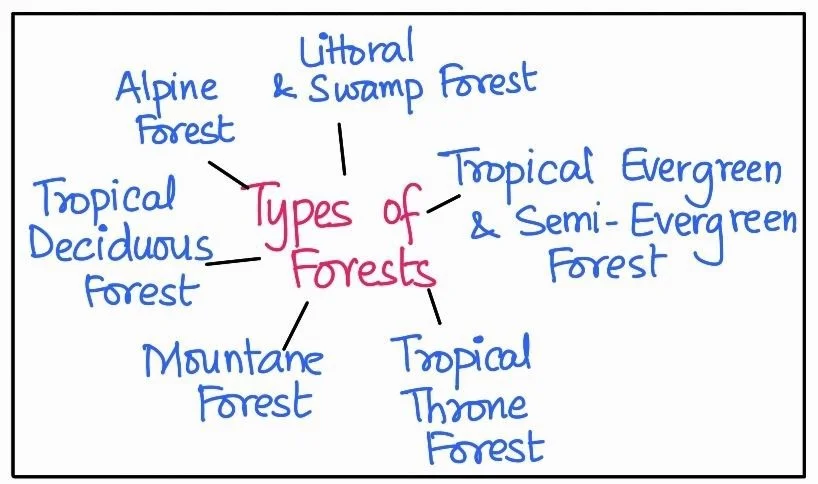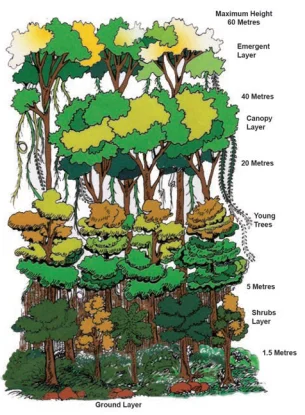![]() December 7, 2023
December 7, 2023
![]() 880
880
![]() 0
0
Natural vegetation denotes a plant community that remains undisturbed for an extended period, allowing its individual species to adapt fully to the local climate and soil conditions. India boasts diverse natural vegetation due to variations in climate and soil. It’s recognized as one of the world’s 12 mega biodiversity countries, home to approximately 47,000 plant species, including 15,000 flowering plants (constituting 6 percent of the world’s total).
Additionally, India hosts numerous nonflowering plants like ferns, algae, and fungi, along with around 90,000 animal species and a rich diversity of fish in its freshwater and marine ecosystems.
Types of Forests: Natural Vegetation Types of India
Indian forests can be categorized into distinct groups based on shared characteristics like the prevailing Natural Vegetation type and climatic regions:

Tropical Evergreen and Semi Evergreen Forests: Flora, Fauna, and Enchanting Ecosystems

Tropical Evergreen Forest
Tropical Evergreen: Rich Flora, Diverse Fauna, and Enchanting Ecosystems
These are the most widespread forests in India and are also called the monsoon forests.
Tropical Thorn Forests: Resilient Flora and Wildlife in Arid Realms
<div class="new-fform">
</div>

Latest Comments